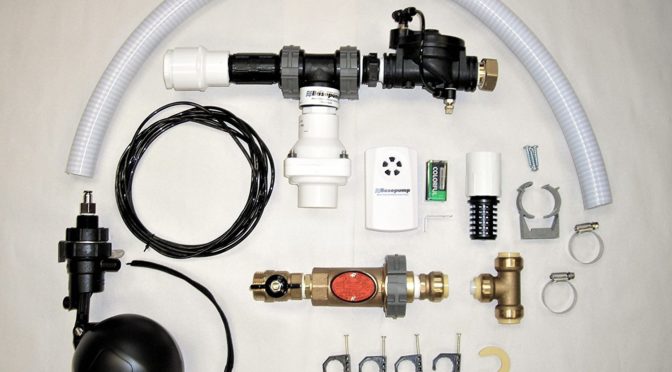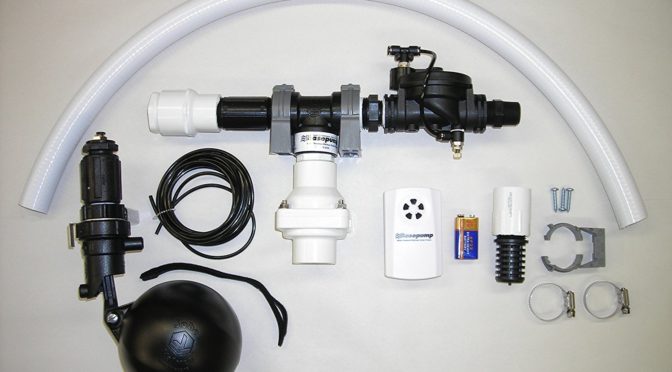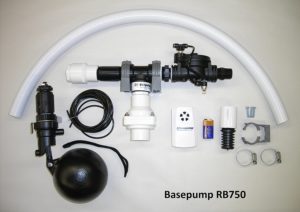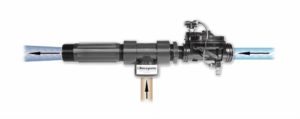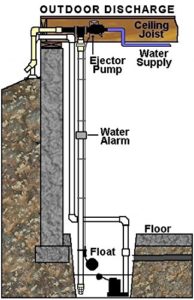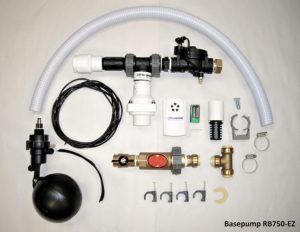 If you want to keep your basement dry, you need a sump pump. But experienced homeowners and landlords know that an AC sump pump isn’t enough, even if it’s one as reliable and breathtakingly fast as the Zoeller M267. Unless you’re fortunate enough to have a generator or live somewhere without power outages, you’re also going to need a backup sump pump in your sump pit. So what are your choices?
If you want to keep your basement dry, you need a sump pump. But experienced homeowners and landlords know that an AC sump pump isn’t enough, even if it’s one as reliable and breathtakingly fast as the Zoeller M267. Unless you’re fortunate enough to have a generator or live somewhere without power outages, you’re also going to need a backup sump pump in your sump pit. So what are your choices?
There are plenty of options out there–we’ve reviewed many of them. But the field basically comes down to DC-based backup pumps and water-based pumps. If you want a DC-powered sump pump, the Wayne WSM3300 is the best on the market. However, if you prize reliability over speed, no battery-powered pump will be good enough; you need a water-based pump. They don’t need electricity, batteries, or anything beyond water pressure from your city water supply. They aren’t as fast as the fastest DC pumps, but the best ones will give you decades of maintenance-free service.
We’ve reviewed some of the best budget water-based backup sump pumps, including the Basepump RB 750 and the Liberty Pumps SJ10. Today we’re going to take a closer look at an upgraded sibling of the RB 750, the Basepump RB 750-EZ Water Powered Backup Sump Pump. It’s more expensive than the RB 750, but it includes a number of additional features to make it far easier to install straight from the box (hence the “EZ” suffix). Our full review is below, but if you’re wondering whether it’s worth it, we sure think so, and you can buy it here.
Key Features of the Basepump RB 750-EZ (60 Second Summary)
 The Basepump RB 750-EZ is a water-based backup sump pump. As a result, it doesn’t rely on AC or DC power, but on a constant water pressure from a municipal water source. It can remove up to 900 gallons of water per hour and comes with a 5 year limited warranty courtesy of Basepump. It’s 18 inches long, 6 inches tall, and 4 inches wide; it weighs 6 pounds.
The Basepump RB 750-EZ is a water-based backup sump pump. As a result, it doesn’t rely on AC or DC power, but on a constant water pressure from a municipal water source. It can remove up to 900 gallons of water per hour and comes with a 5 year limited warranty courtesy of Basepump. It’s 18 inches long, 6 inches tall, and 4 inches wide; it weighs 6 pounds.
The RB 750-EZ intake is 3/4 inches, with the ability to adapt to 1 inch or 1/2 inch inlets. The discharge is 1-1/2 inches and the sump intake is 1 inch. Inlet supply pressure must fall between 40 PSI and 90 PSI, not exceeding 90 PSI. Two gallons of sump water are removed with every gallon of city water pumped.
Pumping performance depends on water inlet pressure as well as the pumping height. At 40 PSI and 10 feet of lift, the water removal rate is 700 GPH. This rises to 750 GPH at 60 PSI, 800 GPH at 80 PSI, and tops out at 900 GPH at 90 PSI. The max lift is roughly 15 feet, although the precise pumping height will vary with both city water pressure and piping configurations.
Like the RB 750, the RB 750-EZ includes a battery-powered high water alarm. It sounds at 85dB and takes a 9 volt battery.
How Does the Basepump RB 750-EZ Compare to the RB 750, the Liberty Pumps SJ10 SumpJet, and the Wayne WSM3300?
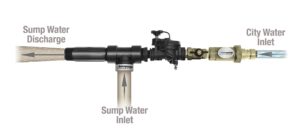 The main differences between the RB 750-EZ and the regular RB-750 involve ease of installation. You can use the built in push-fit pipe-fittings (similar to those sold by Shark-Bite) to connect the EZ to CPVC, PEX, or copper tubing. It also includes a brass shutoff valve, a dual check valve to prevent back flow, a tee, and an adapter. Besides these differences, it will function identically to the RB 750.
The main differences between the RB 750-EZ and the regular RB-750 involve ease of installation. You can use the built in push-fit pipe-fittings (similar to those sold by Shark-Bite) to connect the EZ to CPVC, PEX, or copper tubing. It also includes a brass shutoff valve, a dual check valve to prevent back flow, a tee, and an adapter. Besides these differences, it will function identically to the RB 750.
Compared to the SJ10, the RB 750-EZ will be easier to install due to coming with nearly all of the components necessary for a typical installation, but it will also be a slightly slower pump (900 GPH vs 1,188 GPH) with a much narrower range of safe water inlet pressures (40 to 90 PSI instead of 20 to 100 PSI). The max head will also be significantly lower at 15 feet vs 39 feet. however, the Basepump will come with a significantly longer warranty at 5 years vs 3 years.
Compared to the Wayne WSM3300, the biggest difference is that the RB 750-EZ doesn’t depend on electricity of any kind but on a municipal water supply, while the WSM3300 depends on DC power to run and AC power now and then to charge the battery. The RB 750-EZ is also likely to last far longer due to its inherent design as a water-based pump. However, keep in mind that it will be significantly slower (900 GPH vs 3,300 GPH) and will also feature a slightly lower maximum head at 15 feet vs 20 feet.
Our Short and Long Term Experiences Installing and Using the Basepump RB 750-EZ
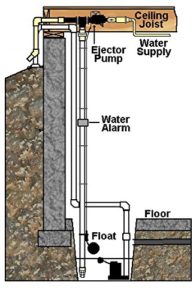 The RB 750-EZ was designed to be easy to install, and in our books, Basepump succeeded handily. You don’t need to be a professional plumber to install it, and either having some plumbing experience or access to someone who does will likely be enough to get things put together. As with the RB 750 or any other water-based pump, you’ll need to connect the city water line to the pump inlet, the sump pipe to the sump receiving inlet, and the discharge pipe to the pump outlet. Because push-to-fit connectors are already included with the EZ, unlike with the regular RB 750, you’ll need next to no accessories to complete the project in many circumstances. Don’t forget to plan for a drainage pipe or tubing to evacuate pumped water as well as a 1 inch PVC pipe to bring sump water into the pump itself. Installation is likely to take about three hours if you have all of the necessary tools.
The RB 750-EZ was designed to be easy to install, and in our books, Basepump succeeded handily. You don’t need to be a professional plumber to install it, and either having some plumbing experience or access to someone who does will likely be enough to get things put together. As with the RB 750 or any other water-based pump, you’ll need to connect the city water line to the pump inlet, the sump pipe to the sump receiving inlet, and the discharge pipe to the pump outlet. Because push-to-fit connectors are already included with the EZ, unlike with the regular RB 750, you’ll need next to no accessories to complete the project in many circumstances. Don’t forget to plan for a drainage pipe or tubing to evacuate pumped water as well as a 1 inch PVC pipe to bring sump water into the pump itself. Installation is likely to take about three hours if you have all of the necessary tools.
The pump is typically mounted to a joist in the basement ceiling before being connected to the city water supply.
Longevity is comparable to that in fellow Basepump water pumps, and you can expect somewhere between 10 and 20 years of functionality, although more years are certainly possible. The biggest risks come from supplying too much water pressure to the pump; make sure your city water pressure falls within the 40 to 90 PSI range and not above 90 PSI. Too little pressure will simply result in a pump that can’t move water, but too much pressure will break seals and lead to leaking.
Troubleshooting and Installation Tips to Get Your Basepump RB 750-EZ Working Sooner
With a pump as reliable as the RB 750-EZ, there’s thankfully not too much to keep in mind in terms of troubleshooting or installation. With that said, it’s important to set up and use the included water alarm so your pump won’t be at risk of turning into a perpetually-running garden hose if a fitting breaks or if the float switch doesn’t shut off once the crock is emptied.
When setting up your water alarm, you’ll want to make sure it’s at a height where it will activate before the sump pump itself does; this will alert you before the sump pump begins to pump water. Similarly, you’ll want to check the pump to make sure it turns itself off once it’s done pumping water. You shouldn’t need to do this every time the pump activates, but it’s a good idea to check immediately after an installation so you can catch any potential problems from the start. Of course, it’s also a good idea to test the RB 750-EZ and whatever main pump you have on a monthly basis. To test the pump, simply disconnect your main sump pump (e.g., by unplugging it) and fill your sump basin until your alarm sounds (which should again be before the pump itself is triggered to operate). The pump should begin pumping water and then stop a few seconds after the float shuts off.
Make sure you don’t remove the vacuum breaker attached to the pump; this is in place specifically to keep water from siphoning upstream into the city water system, which is both against the law and a health hazard to the public. If the vacuum breaker leads to water splashing around your pump and basement, you’ll want to add a vent or air gap somewhere in the discharge pipe to release pressure.
Basepump RB 750-EZ Pros, Cons, and Value Comparison
It’s hard to say anything negative about the Basempump RB 750-EZ. It’s not the cheapest or fastest water-based sump pump on the market, but it’s the best combination of speed, reliability, and ease of installation you’re going to find for under $300 among water backup pumps. Compared to the RB 750, we’re happy to see most of what you’ll need for a successful installation is included right in the box. As with the RB 750, you’re going to enjoy a much greater level of reliability than what you’ll find in battery-operated sump pumps due to the much lower likelihood of losing water pressure compared to that of losing electricity. Remember that water-based sump pumps aren’t built for speed; they’re built to offer decades of maintenance-free peace of mind along with near-guaranteed functionality throughout their lifespans. The RB 750-EZ delivers on both counts in our books.
You can buy the Basepump RB 750-EZ here on Amazon. You can buy the Basepump RB 750 here. You can buy the Liberty Pumps SJ10 here. You can buy the Wayne WSM3300 here on Amazon. You can buy additional PEX tubing here and SharkBite connectors here. You can buy a silent check valve here.
If you find our work at PumpThatSump helpful, you can support our relentless reviewing of every sump pump on the market by shopping via our Amazon link for whatever you need to make your house a home. Despite being self-employed, we promise not to spend it all on health insurance.
